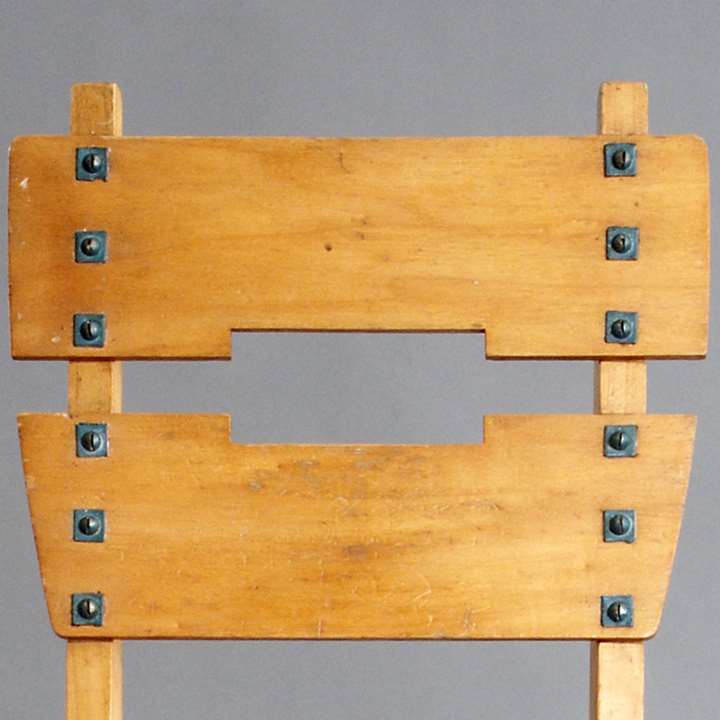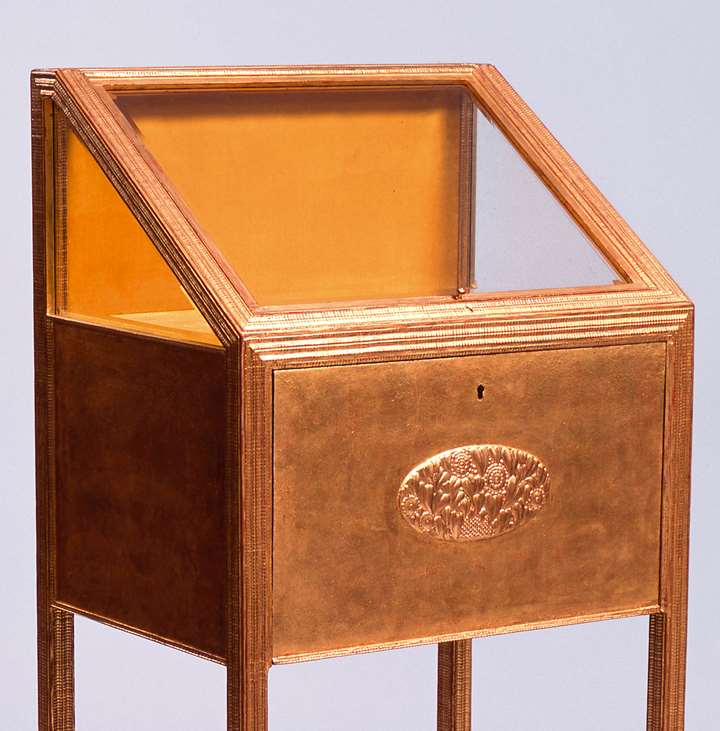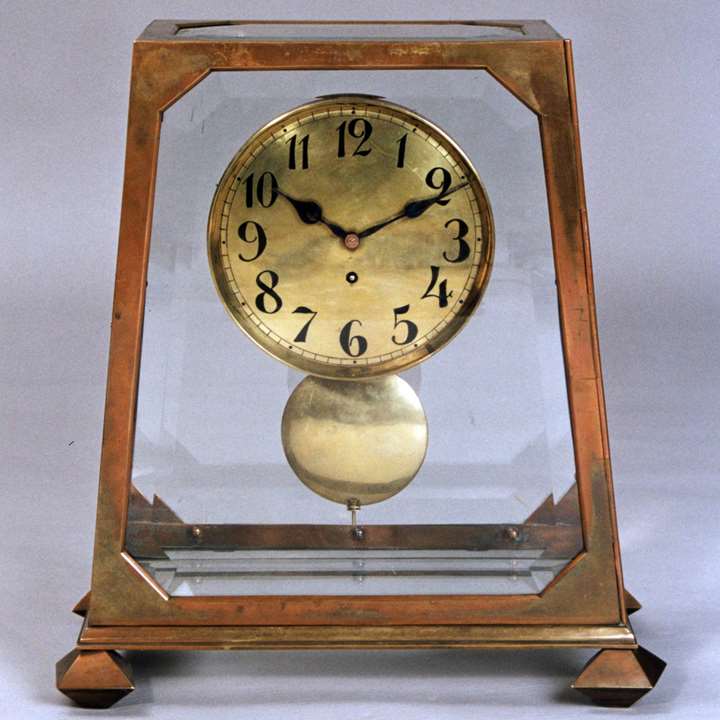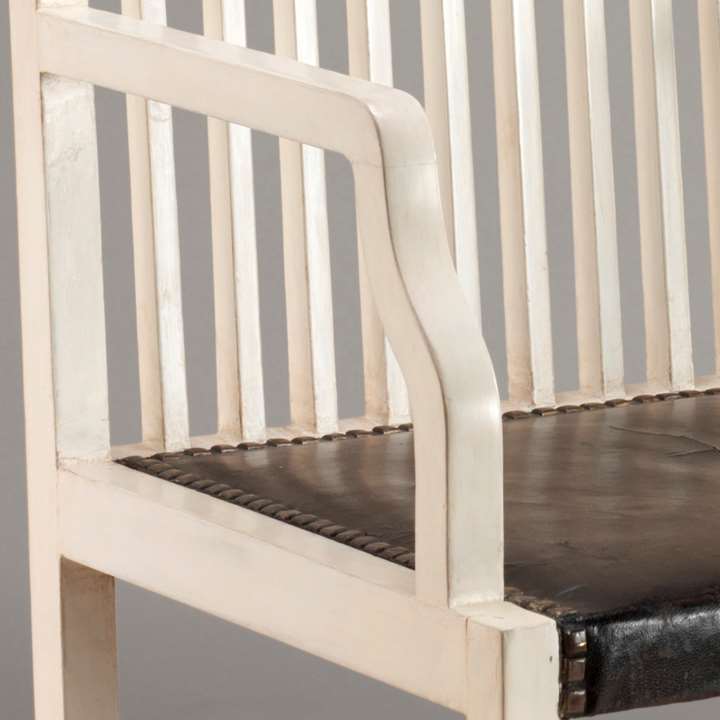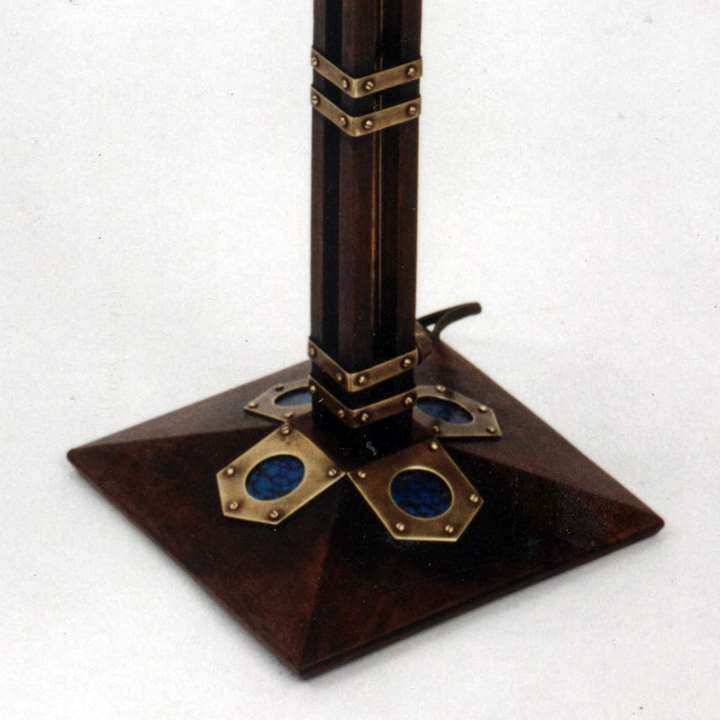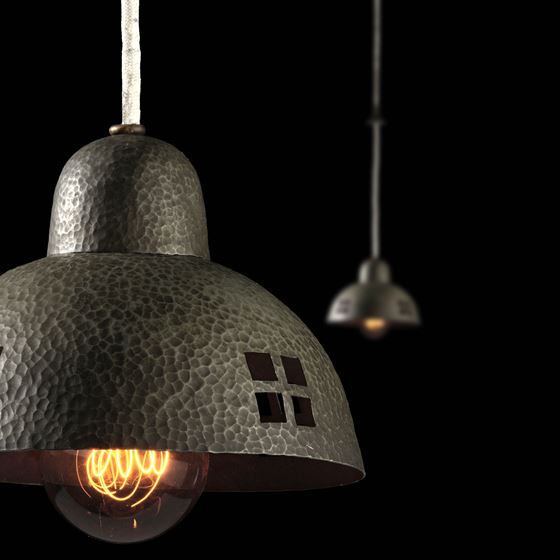Description & Technical information
4 pieces made for the Hochstetter partment, Vienna
Christian Witt-Dörring, curator at the Neue Galerie writes:
Josef Hoffmann frequently introduces this type of single-light pendant lamp into his interiors in several variations of form. As in all his interior designs, the individual furnishing elements– such as this luminaire – are devised as integral parts of an architectural programme. The luminaire is part of an overall aesthetic concept, in which the individual constituents are orchestrated into an ensemble. As a rule, he installs several single-light pendant lamps dispersed over the ceiling in order to define the air space left free after positioning the furniture. They act as a counterbalancing connection between the space-blocking volumes of the furniture and the free space. The lamps are suspended at the same height, creating a supplementary, imaginary horizon between those formed by the top edge of the furniture and by the ceiling. This fragmented horizon conjured up by the bottom edge of the lamps enables Hoffmann to accentuate the horizontal alignment of the interior without having to resort to more obvious ploys. The gradual transition from the clearly defined horizon of the carcass furniture traced along the walls has to be completed by the occupant him- or herself from the centre of the room.
The pendant lamp shown here is one of the earliest lamps designed by Hoffmann prior to the founding of the Wiener Werkstätte, for it shows no stamps, whether of designer or workshop. It was made for the bedroom in the residence belonging to a member of the Hochstetter family, related by marriage to Paul Wittgenstein. Two photographs published in 1904/05 show them hanging in pairs from the ceiling over the double bed and a kind of cheval mirror with attached cabinets. They are each installed to hang exactly over the middle of a corresponding storage space; firstly, two night tables framing the right and left sides of the double bed, and secondly, two half-height cabinets on either side of a mirror. Thanks to the enclosed electric light, the light can be directed downwards. This new energy technology supplied via an electric cable enabled Hoffmann to develop an independent form of luminaire which was no longer based on the upwardly burning gas- or candlelight. The cable itself becomes the defining aesthetic element. It leads the required electric power supply from the ceiling outlet to the lamp bulb. The start and finish of this path are each defined by a flat and an elongated, semi-spherical cuppa, in one case open at the top and in the other at the bottom. While the upper cuppa has a border attached to its rim to fix the lamp to the ceiling, the opening at the bottom has a second, larger cuppa attached to it, forming the actual lampshade. Its silver-grey and hammered surface is perforated with “windows” consisting of four squares, so that the light from the lamp bulb within shines not only downwards, but also in mellowed refulgence through the shade. The electric cable itself has three downwardly directed, funnel-shaped decorative elements attached at regular intervals. In cross-section they resemble arrowheads pointing upwards. They are simultaneously ornament and psychological aid, their multiple, upwardly directed points acting as a visual counterbalance to the downward pull of the pendant lamp. The lamp seems to float in space, thus realising the modernist ideal of achieving perfect harmony between space and material. Using the simplest of means, Hoffmann has created a simultaneously functional and decorative solution, yet which does not dominate or upstage the interior as an overly self-assertive ornament.
Date: 1902/03
Period: 20th century
Origin: Vienna
Medium: Hammered zinc
Dimensions: 140 x 17.5 cm (55¹/₈ x 6⁷/₈ inches)
Literature: Deutsche Kunst und Dekoration; vol. XV, 1904/05, pp. 128-129
Innendekoration; vol. XVI, 1905, p 164
Exhibitions: Gustav Klimt und die Kunstschau 1908, Belvedere, Vienna, 2008/09
Categories: Decorative Arts & Design, Furniture
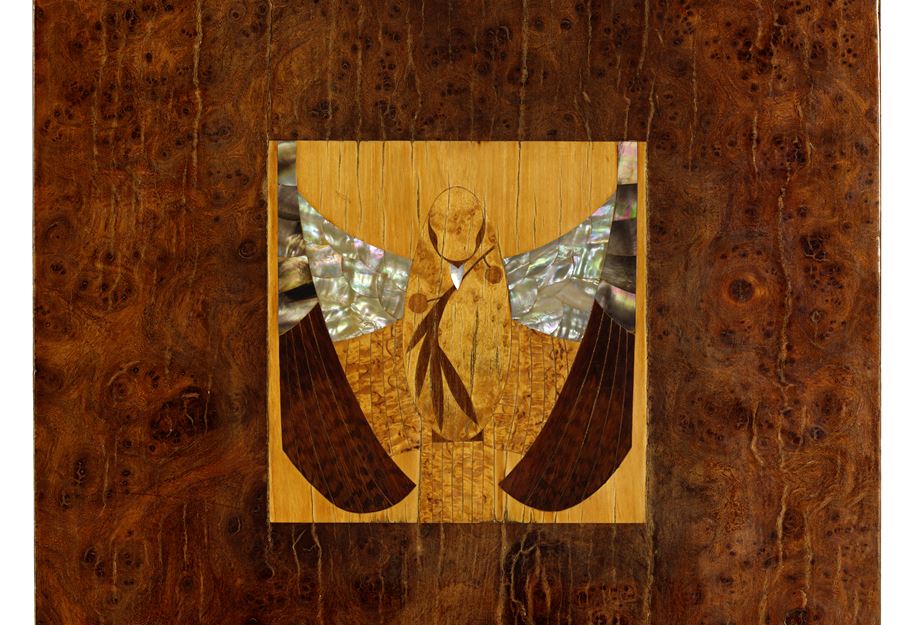
Discover the gallery
Yves Macaux
20th Century Decorative Art
